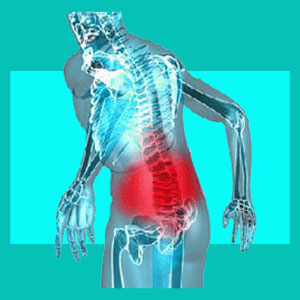
Lumbar degenerative disc disease exercises are typically prescribed as part of a physical therapy program for lower back pain sufferers. Disc degeneration is commonly implicated as a direct cause or contributor to lumbar dorsalgia, despite a complete lack of proof that it is a pathological process. Virtually all normal degrees of disc desiccation are asymptomatic, making treatment completely unnecessary. However, forgetting this simple fact for just one moment, one must contemplate how exercises are supposed to help degenerated discs, even if they did require treatment…
Exercise therapy is one of the most common and popular forms of conservative care for herniated and degenerated discs, although the reasons why it is used so often are not easy to understand.
This dialog focuses on the use of exercise therapy as a treatment for deteriorated lumbar discs. We will explain why the theory used to justify exercise treatment is illogical. We even provide some surprising reasons why exercise might resolve pain, despite the symptoms being incorrectly attributed to lumbar DDD.
Indications for Lumbar Degenerative Disc Disease Exercises
When lower back pain exists, and a diagnosis of disc degeneration has been made, a conservative treatment plan will virtually always follow. As long as the condition is not deemed to be a medical emergency, surgery will be typically avoided for as long as possible, in most cases. Instead, a variety of symptomatic therapies will be prescribed in an attempt to hopefully bring the pain under control.
Drugs and exercise are usually the first 2 of these methods recommended for most patients, even though drugs are dangerous and exercise is very ambiguous in its intended effect. Most doctors will say that exercise therapy will help the joints to move better and that it may help loosen up stiffness and cramping associated with lumbar DDD. Furthermore, the patient is usually told that specific forms of exercise will increase muscular strength in the core, helping to stabilize the spine and relieve pain.
Exercise will provide many benefits to the body. We are outspoken advocates of an active lifestyle for all people. However, lumbar degenerative disc disease exercises are extremely limited in providing any specific positive benefits for patients with disc degeneration in the lower back.
Exercise certainly can help to maintain flexibility and functionality. These facts are true. Exercise can definitely increase muscular strength. However, there is no indication that DDD will improve from any type of exercise. DDD does not generally cause spinal instability and strong core muscles do not stabilize an unstable spine anyway. Therefore, the primary argument for using exercise to treat disc desiccation seems rather illogical, by all objective standards.
Lumbar DDD Exercise Facts
Exercise therapy does provide temporary relief from many back and neck pain problems. This is a fact. The logical reason for this is that exercise increases regional blood circulation and therefore promotes localized oxygenation of painful tissues. Additionally, exercise helps to metabolize cellular waste chemicals that can cause pain. Being that ischemia is one of the leading causes of neck and back pain, regardless of what scapegoat condition being previously blamed, exercise helps to provide much needed oxygen to starved muscles and nerves.
When used to treat disc degeneration, exercise will not rehydrate the disc or repair wear and tear in its structure. Exercise will also not reverse the aging processes that act on the spine, nor restore lost intervertebral spaces caused by a thinning of aging disc tissues. Basically, exercise promotes general wellness, but will have no specific benefits for any spinal pathology, since it does not act on the spinal anatomy. This is basic scientific truth.
However, doctors tend to avoid lots of scientific truths, since they do have a tendency of complicating the diagnostic and treatment processes and, most importantly, cut into the economics of modern medical practice. In essence, doing things the right way is far less profitable than propagating myths and lies to keep the unenlightened dorsopathy treatment juggernaut fully functional.
Lumbar Degenerative Disc Disease Prescriptions
Exercise is terrific to get in shape, to rehabilitate injury and to treat some highly specific health issues, such as muscular imbalances. For disc desiccation, exercise is about as logical a treatment choice as it would be for reversing wrinkles in the skin. Exercise can not undo aging processes.
Medical science recognizes the logic in this, but continues to recommend exercise to millions of disc degeneration patients each year. However, we are not overly displeased by this fact. Instead, we thank doctors for choosing illogical exercise, compared to illogical drug utilization or illogical surgery. At least exercise is positive and healthy for the body, despite its complete lack of efficacy for resolving lumbar DDD.
How can exercise rehabilitate a degenerated disc? It can’t.
How can exercise help a herniated disc? It can’t.
Exercises will do nothing to change the spinal anatomy, but will provide oxygen and a healing response to ischemic areas of the body.
A final note of interest that might help some patients to find resolution for the true issue causing their pain: If you can not find a lasting cure from exercise, but do enjoy some temporary, localized analgesic benefit, there is an excellent chance that your pain has been misdiagnosed.
Consider the alternative explanation that ischemia might be the far more likely source of symptoms and get to work treating the real culprit, instead of embracing the ridiculous theory of normal intervertebral aging causing such rampant suffering.
Herniated Disc > Lumbar Degenerative Disc Disease > Lumbar Degenerative Disc Disease Exercises





